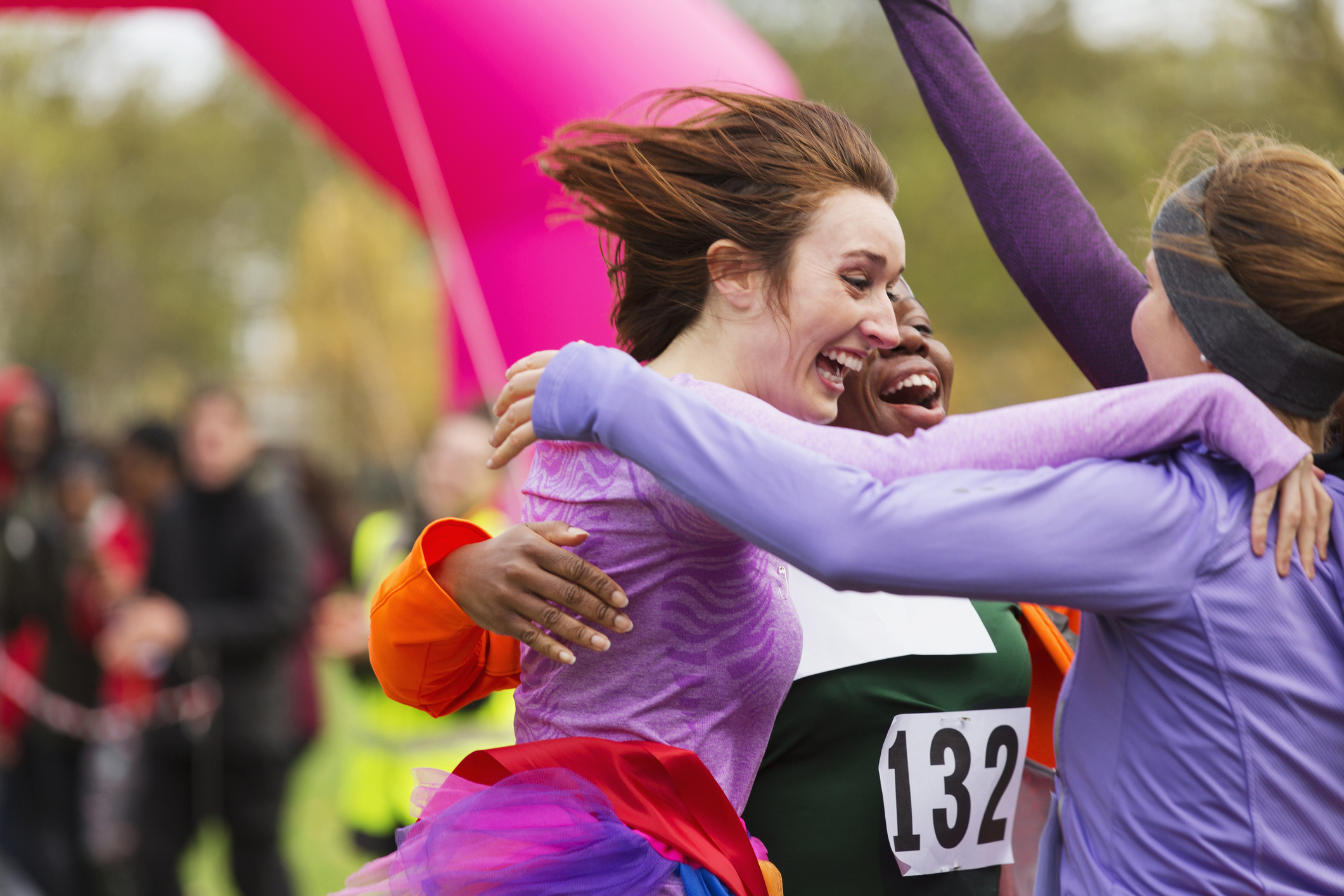
With La Parisienne right around the corner, an annual women’s race run through the heart of Paris, we thought we would introduce you to the increasingly popular world of women-only races, and find out what the benefits might be.
Women are becoming an increasingly powerful force in the world of running. According to data from Running USA, 59% of participants in any given road race are women, a trend that looks set to continue. And that’s not the only reason to be optimistic about the women’s running boom. Since the 1970s, there’s been an explosion in the number of women-focused races, which has done much to reverse the massive gender imbalance that was once present in long-distance running. Get the lowdown on the history of women’s running, as well as the benefits that these exclusively female races provide.
Humble beginnings
The history of women’s-only races began back in 1972, when the New York Road Runners put on the very first female-focused race. Initially, it was seen as a bit of a joke, and to boost interest in the event, the organizers booked the Playboy Bunnies to get the race started. Thankfully, times have changed! Following the limited success of this event, Kathrine Switzer—the first woman to enter the Boston Marathon—helped to create the Avon International Running Circuit. This revolutionary program, introduced in 1978, aimed to attract more women to the sport of long-distance running and prove to the world that it was time to take professional female athletes more seriously.
The Avon series laid the groundwork for the women’s marathon to become an Olympic event. After a long campaign from many dedicated activists, including Switzer herself, the IOC finally voted to make the women’s marathon an Olympic event in 1981. And in 1984, Joan Benoit became the first-ever women’s Olympic Games gold-medalist marathon runner.
Women’s-only races today
After these formative races, women’s-only running events have become increasingly popular. Today, there are hundreds of kick-ass women’s races to explore, from Run Like a Girl in Columbus, Ohio, to the Nike Women’s 10k that takes place in around 20 cities across the globe. Perhaps the most famous women’s-only race is La Parisienne, an annual 6.7 km event that runs through the heart of Paris. Around 40,000 women from all over the world attend, raising money for breast cancer research (Note: Withings will be a sponsor in 2019 once again). All in all, women’s running is in a pretty rosy spot at the moment.
Now, that’s not to say that everything’s perfect. Many women’s running events are marketed in a problematic way, using stereotypically feminine images and empty buzzwords that seem a little more patronizing than empowering. Then there’s the race events themselves. Certain events have come under fire for hiring shirtless firefighters to hand out chocolate and champagne at the finish line. Although some reports claim that these “girly” innovations are designed to keep men from entering the events, it’s hard not to think that this sort of heteronormative imagery really doesn’t help the cause.
What are the benefits of women’s races?
While there are no physical differences between mixed-gender races and women’s-only races—sadly, you’re not going to burn any more calories—there are plenty of reasons why these events continue to attract thousands of women from all over the world. First, there’s the camaraderie and sense of empowerment that women’s-only races provide. Lining up alongside women of all sizes, abilities, and ages feels awesome, and while there’s still an element of competition, there’s also a sense of celebration that isn’t replicated in standard running events.
Secondly, some consider women-focused races to be far less intimidating than other competitive events, which can be massively helpful for newbie runners who are gearing up for their first-ever race. It’s a safe space in which to start your running journey, and an environment that isn’t necessarily afflicted by the same kind of testosterone-heavy competitive edge that you’re likely to experience in mixed-gender running events.
Bottom line: women’s running has a rich history and there are a ton of reasons why it continues to play a vital role in the landscape of long-distance running. Why not see if there’s a women’s race in your local area?
Finally, see below for a look at our coverage of last year’s La Parisienne.
https://www.instagram.com/p/BoYYFoYFZKK/


